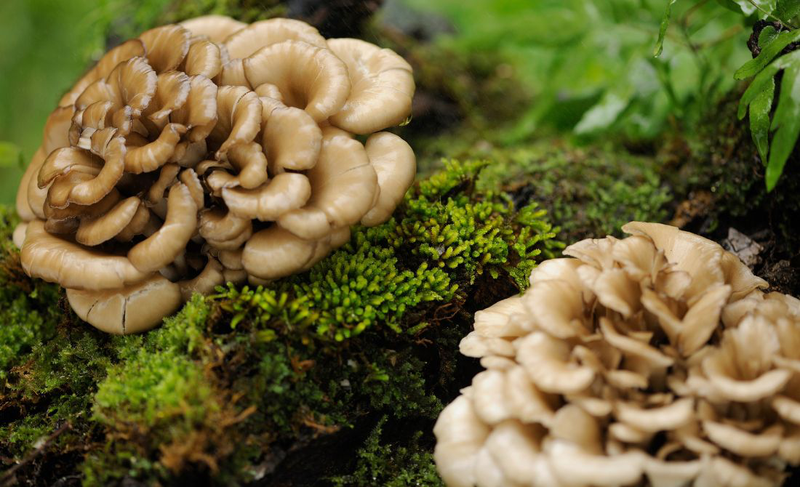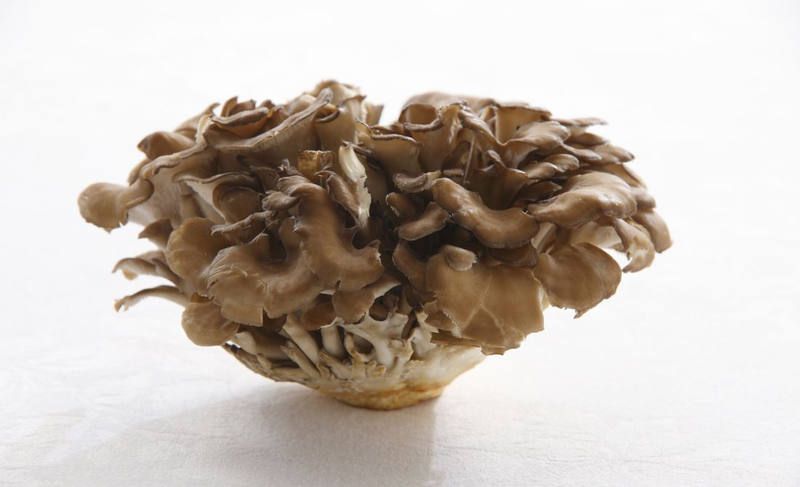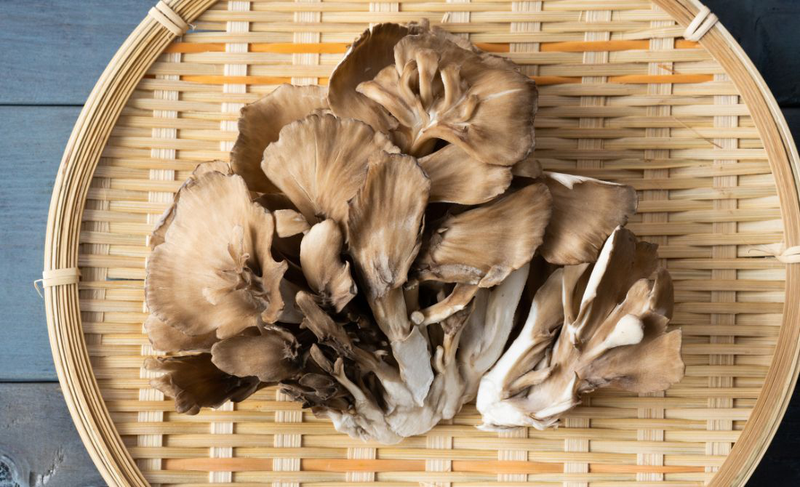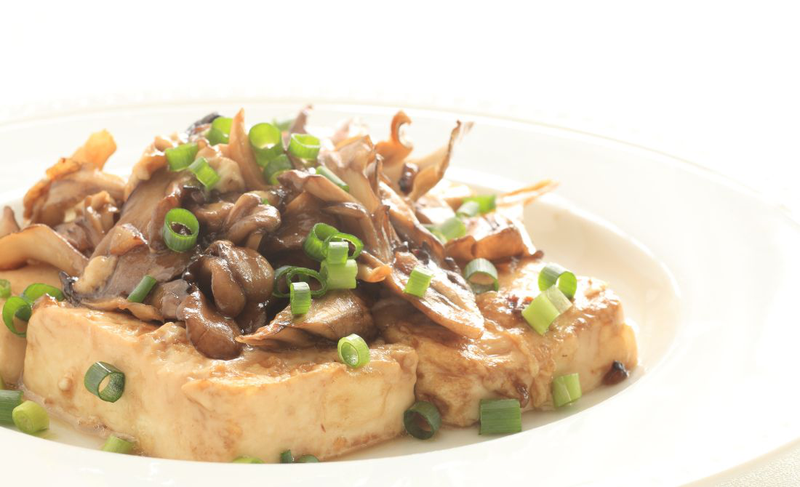Maitake mushroom, also known as dancing mushroom, is a rare wild mushroom with many health benefits. Not only does it have a delicious taste, Maitake mushroom also contains abundant and rich nutrients. Therefore, this type of mushroom is increasingly popular in cuisine and medicine.
It is estimated that there are about 2000 species of edible mushrooms in the world. Among them, Maitake mushroom stands out with its unique “appearance” and excellent nutritional values. This mushroom is not only a food but also a precious medicine, long used in traditional medicine. In this article, we will explore with you the nutritional composition and health benefits of the edible wild mushroom called Maitake.
Origin, distribution and characteristics of Maitake mushroom
Maitake mushroom, also known as dancing mushroom, is a rare mushroom originating from the old forests of East Asia, especially Japan and China. The name “Maitake” in Japanese means “dancing mushroom”, derived from their distinctive shape when growing in large clusters, spreading out like dancers. Maitake mushrooms have been used as food and medicine for thousands of years in Asian countries.
In terms of habitat, Maitake mushrooms usually grow parasitically on the roots or stumps of hardwood trees such as oak, maple, or walnut. They usually appear in late summer and early fall, when the climate is humid and cool. Due to high demand and shrinking habitat, Maitake mushrooms are becoming increasingly rare in the wild.

Maitake mushroom is a precious mushroom, popular in the market.
Maitake mushrooms grow in large clusters, each cluster can weigh up to tens of kilograms. Each individual mushroom has the shape of a leaf, stacked on top of each other to form a large block. The color of Maitake mushrooms is usually grayish brown or yellowish brown, depending on environmental conditions.
Currently, thanks to modern cultivation techniques, Maitake mushrooms have been successfully bred and widely supplied to the market. However, wild Maitake mushrooms are still considered rare and have a higher value than cultivated mushrooms.
Nutritional composition of Maitake mushrooms
Maitake mushrooms are not only famous for their delicious taste and unique shape, but are also an extremely rich source of nutrition. In the composition of Maitake mushrooms, we can find a variety of essential nutrients for the body.
In 100g of fresh Maitake mushrooms contain the following main nutrients:
- Energy: 31 – 35 calories, very low, suitable for weight loss diets;
- Protein: About 1.9 – 2.0g;
- Fat: 0.1 – 0.2g, mainly unsaturated fat, good for health;
- Carbohydrate: About 7.0 – 7.5g, including natural sugars and polysaccharides that support slow, stable energy supply;
- Fiber: 2.7 – 3.0g.
This precious mushroom also provides a variety of vitamins and minerals such as:
- Vitamin D2: 28 – 30 IU;
- Vitamin B2: 0.3 – 0.4mg;
- Vitamin B3: 6.8 – 7.0mg;
- Vitamin B5: 1.1 – 1.3mg;
- Potassium: 204 – 210mg;
- Phosphorus: 68 – 70mg;
- Magnesium: 8 – 10mg;
- Iron: 0.3 – 0.4mg;
- Zinc: 0.5 – 0.6mg;
In addition, Maitake mushrooms also contain other special biological compounds such as: Beta-glucans (1,3/1,6), ergothioneine, D-fraction,…

It is not difficult to understand why this type of mushroom is popular in the market.
Health Benefits of Maitake Mushrooms
With the rich nutritional composition as mentioned above, what are the benefits of dancing mushrooms?
Strengthen immunity, prevent cancer
Compared to common mushrooms, Maitake mushrooms stand out with a much higher beta-glucan content. Beta-glucan is a type of polysaccharide that can stimulate white blood cells. From there, it has the effect of strengthening the immune system.
In a study, beta-glucan from Maitake mushrooms inhibited metastasis progression, and tumor size was also reduced. Maitake mushrooms also contain compounds such as D-fraction and SX-fraction, which can inhibit the growth of cancer cells and help improve the effectiveness of cancer treatments.
Maitake mushrooms help reduce cholesterol, protect the heart
This precious mushroom can help reduce cholesterol and blood pressure, preventing the risk of cardiovascular diseases. Beta-glucans in mushrooms have the ability to reduce LDL cholesterol by binding to cholesterol in the intestines and preventing its absorption into the blood. Maitake mushrooms stimulate the activity of the enzyme lecithin-cholesterol acyltransferase (LCAT), an important enzyme in the metabolism of HDL cholesterol.
Some studies have also shown that this mushroom can help reduce blood triglyceride levels. Triglycerides are another type of fat in the blood, high levels of which are also associated with the risk of cardiovascular disease.

Many people may be surprised to learn about the uses of dancing mushrooms.
May Help Treat Type 2 Diabetes
Some studies have shown that Maitake mushrooms may help improve insulin sensitivity, helping cells respond better to insulin and absorb sugar more effectively.
The enzyme alpha-glucosidase is responsible for breaking down complex carbohydrates into simple sugars (glucose) in the small intestine. Maitake mushrooms are thought to inhibit the activity of this enzyme. This slows down the absorption of sugar into the bloodstream after a meal, helping to prevent sudden spikes in blood sugar.
In addition, the soluble fiber beta-glucans found in Maitake mushrooms also contribute to blood sugar control by slowing down the digestion and absorption of carbohydrates. In addition, the polysaccharides found in Maitake mushrooms have been shown to help treat type 2 diabetes.
Maitake mushrooms may protect your brain
The antioxidant and anti-inflammatory properties of Maitake mushrooms help protect nerve cells. It may help prevent neurodegenerative diseases such as Parkinson’s disease and Alzheimer’s disease.
Anti-inflammatory properties of Maitake mushrooms
Glycerides and plant sterols extracted from Maitake mushrooms can inhibit the inflammatory enzyme cyclooxygenase (COX). As a result, it helps reduce inflammation, joint pain, and diseases related to chronic inflammation.

It would be a shame not to add dancing mushrooms to a healthy diet.
How to use Maitake mushrooms to maximize their effectiveness
Although Maitake mushrooms bring many health benefits, we still need to pay attention to some issues when using them to ensure safety and effectiveness.
- Maitake mushrooms have a very distinctive shape, but to avoid confusion with poisonous mushrooms, you should buy mushrooms at reputable stores. When buying Maitake mushrooms, you should choose fresh mushrooms, light brown in color, plump mushroom caps, not crushed.
- Many people are allergic to mushrooms. If you have a history of allergies to any type of mushroom, be very careful when eating Maitake mushrooms. After eating mushrooms, if you experience itching, hives, difficulty breathing or any other symptoms of anaphylaxis, seek immediate medical attention.
- Maitake mushrooms are highly safe, but if eaten raw, they can cause indigestion and digestive disorders for some people.
- Maitake mushrooms may interact with medications used to treat diabetes, high cholesterol, or high blood pressure.
- There is no exact dosage for using Maitake mushrooms. However, you should start with a small amount and gradually increase it to let your body adapt.
In culinary, Maitake mushrooms are an extremely attractive, nutritious, delicious ingredient with a crunchy texture and rich flavor. Thanks to the content of antioxidants and valuable biological compounds, Maitake mushrooms are also widely used in traditional and modern medicine. Add Maitake mushrooms to your daily menu to improve your health starting today.





